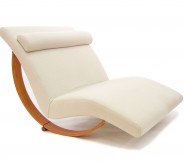Lot #3 - Arthur Boyd
-
Auction House:Deutscher and Hackett
-
Sale Name:Two Important Private Collections: Modern / Traditional
-
Sale Date:08 Dec 2021 ~ 7pm (AEDT)
-
Lot #:3
-
Lot Description:Arthur Boyd
(1920 - 1999)
Pulpit Rock With Flame Trees And Cockatoos, c.1982
oil on canvas
91.5 x 121.5 cm
signed lower right: Arthur Boyd -
Provenance:Art Galleries Schubert, Queensland; Private collection, Melbourne, acquired from the above in November 1987
-
Notes:‘The natural beauty of the Shoalhaven area caused Boyd to marvel constantly. His paintings are a celebration of grandeur and wonder of Nature. It is to Boyd’s credit that a single landscape can inspire such diversity of work. He gives us the impression that there are infinite possibilities, as long as we train ourselves to see.’1 Eager to rediscover his roots, his 'Australianism', after more than a decade abroad, in 1971 Arthur Boyd returned to the country of his birth to take up a Creative Arts Fellowship at the Australian National University in Canberra. Over the blazing summer of 1971 – 72, Boyd and his wife Yvonne were invited by the Sydney art dealer Frank McDonald to visit Bundanon for the weekend, staying at a home he shared on the south coast of New South Wales with art historian Sandra McGrath and her husband Tony. Here the artist’s joyful rediscovery of the Australian bush with its stark contrasts and clarity of light was nothing short of an epiphany, and thus in 1973, Boyd purchased the nearby property Riversdale on the banks of the Shoalhaven River. Once again the magic of the dour, untamed Australian landscape became the impetus for his art, and over the subsequent twenty-five years until his death in 1999, Boyd would dedicate himself almost exclusively to capturing the myriad moods of the Shoalhaven in images that are today imprinted upon the national psyche as some of our most beloved and iconic. Soul-piercing in its beauty, the Shoalhaven region offered both refreshing solace for the artist’s world-weary eyes, and infinite potential as a subject – 'the variation in the area with its great deep tones and high keys' bearing strong affinities with music. As Boyd elaborated, ‘in the desert there is only one note, just one low singing note. In this landscape the tonal range – not tonal in the obvious sense of colour, but the actual fact of the horizon which can vary from very high to low to infinite, depending on your line of vision – makes it a greater challenge. It has a knife-edged clarity. Impressionism could never have been born here, but Wagner could easily have composed here. He could not have composed at Port Phillip Bay. In fact,’ he added with characteristic playfulness, ‘I actually think Wagner lived in the Shoalhaven.’2 Capturing the magnificent view from the Bundanon homestead, 'Pulpit Rock with Flame Trees and Cockatoos, c.1982 'features the monolithic Pulpit Rock with its forward-tilting Phrygian cap profile, here symmetrically positioned and glistening in the searing midday sun, with the region’s ubiquitous cockatoos and flame trees dotted in the foreground. A central feature of Boyd’s Shoalhaven iconography, the towering Pulpit Rock has been described by critics as ‘his Rigi, his Mount Fuji, his Mont Sainte-Victoire’3 (alluding to the great mountain sequences of J.M.W. Turner, Hokusai and Cézanne), but also compared to Monet’s various series of haystacks, poplars and the west front of Rouen Cathedral. Indeed, elaborating upon the religious significance imbued in his repeated use of this motif, Hoff suggests 'in these paintings of Pulpit Rock set between sky and water in an ambience of luminous space, Boyd restates the theme of the cyclic element in nature that had occupied him in the forties.’4 Acknowledging that he is religious 'in the sense that I am overawed by the marvellous things in the world and overawed by the awful things',5 thus Boyd here pays homage to the sheer beauty, grandeur and wonder of Nature - all the while implying that unless steps are taken to preserve this wilderness for future generations, it will be destroyed. As he reflected, ‘I'd like to feel that through my work there is a possibility of making a contribution to a social progression or enlightenment. It would be nice if the creative effort or impulse was connected with a conscious contribution to society, a sort of duty or service. I think you have to make something which does involve concepts and ideas.’6 1. McKenzie, J., 'Arthur Boyd at Bundanon', Academy Editions, London, 1994, p. 42; 2. Boyd, cited in McGrath, S., 'The Artist and The River: Arthur Boyd and the Shoalhaven', Bay Books, Sydney, 1982, p. 62; 3. Hoff, U., 'The Art of Arthur Boyd', Deutsch, London, p. 78; 4. ibid.; 5. Boyd, cited in McKenzie, op. cit., p. 43; 6. Boyd, cited in Gunn, G., 'Arthur Boyd: Seven Persistent Images', National Gallery of Australia, Canberra, 1985, p. 73 VERONICA ANGELATOS
-
Estimate:A$90,000 - 120,000
-
Realised Price:
-
Category:Art
This Sale has been held and this item is no longer available. Details are provided for information purposes only.










